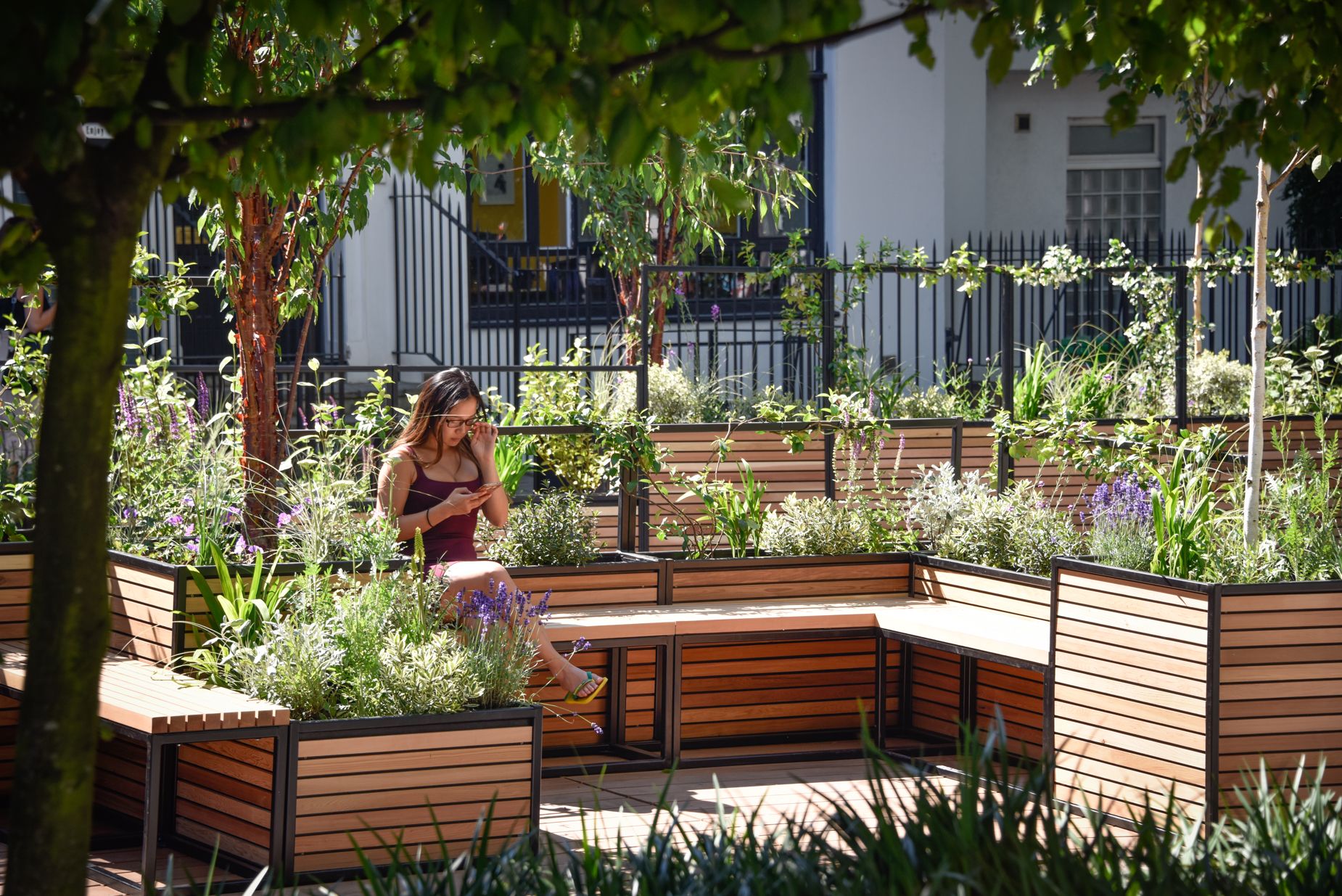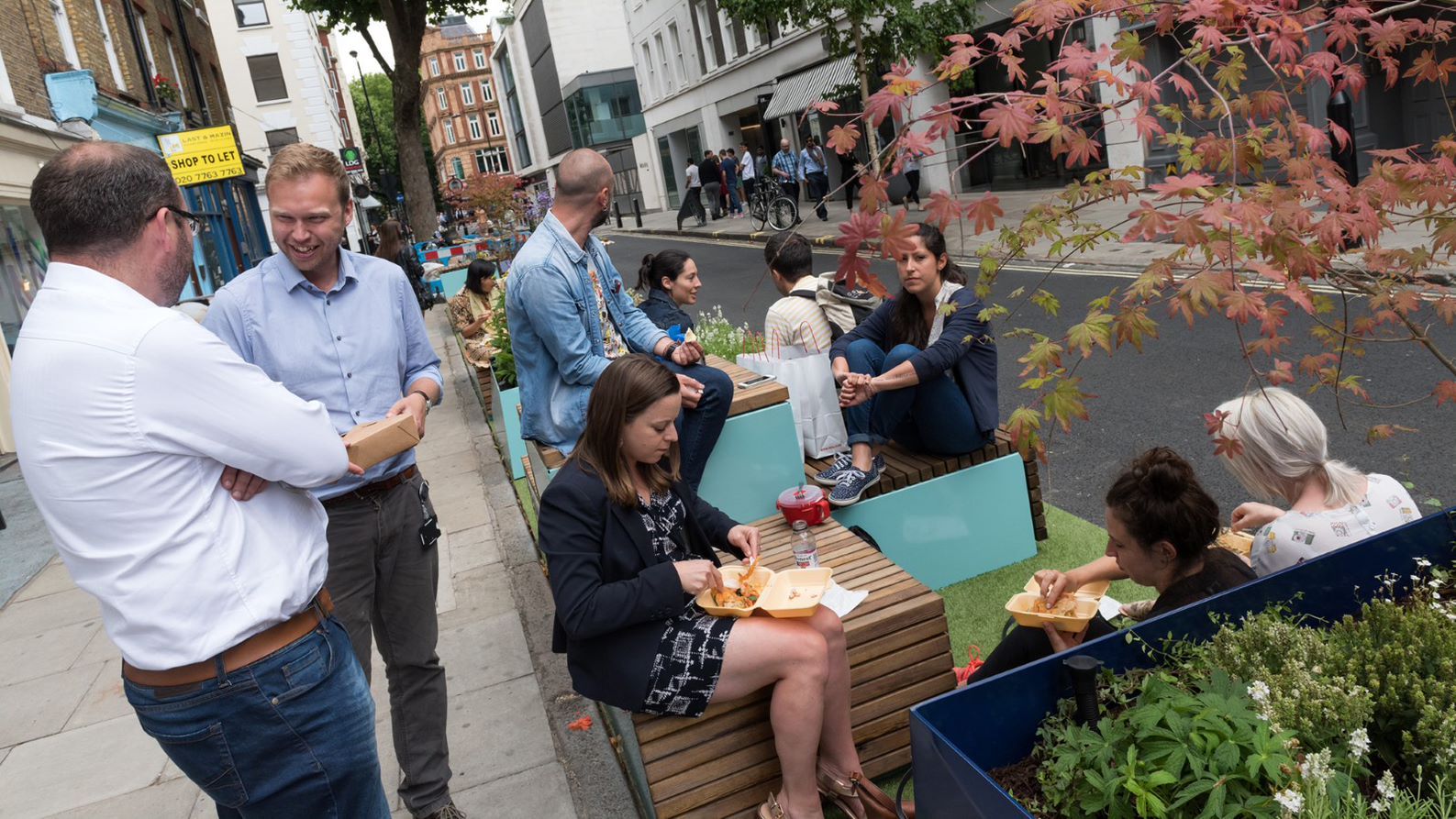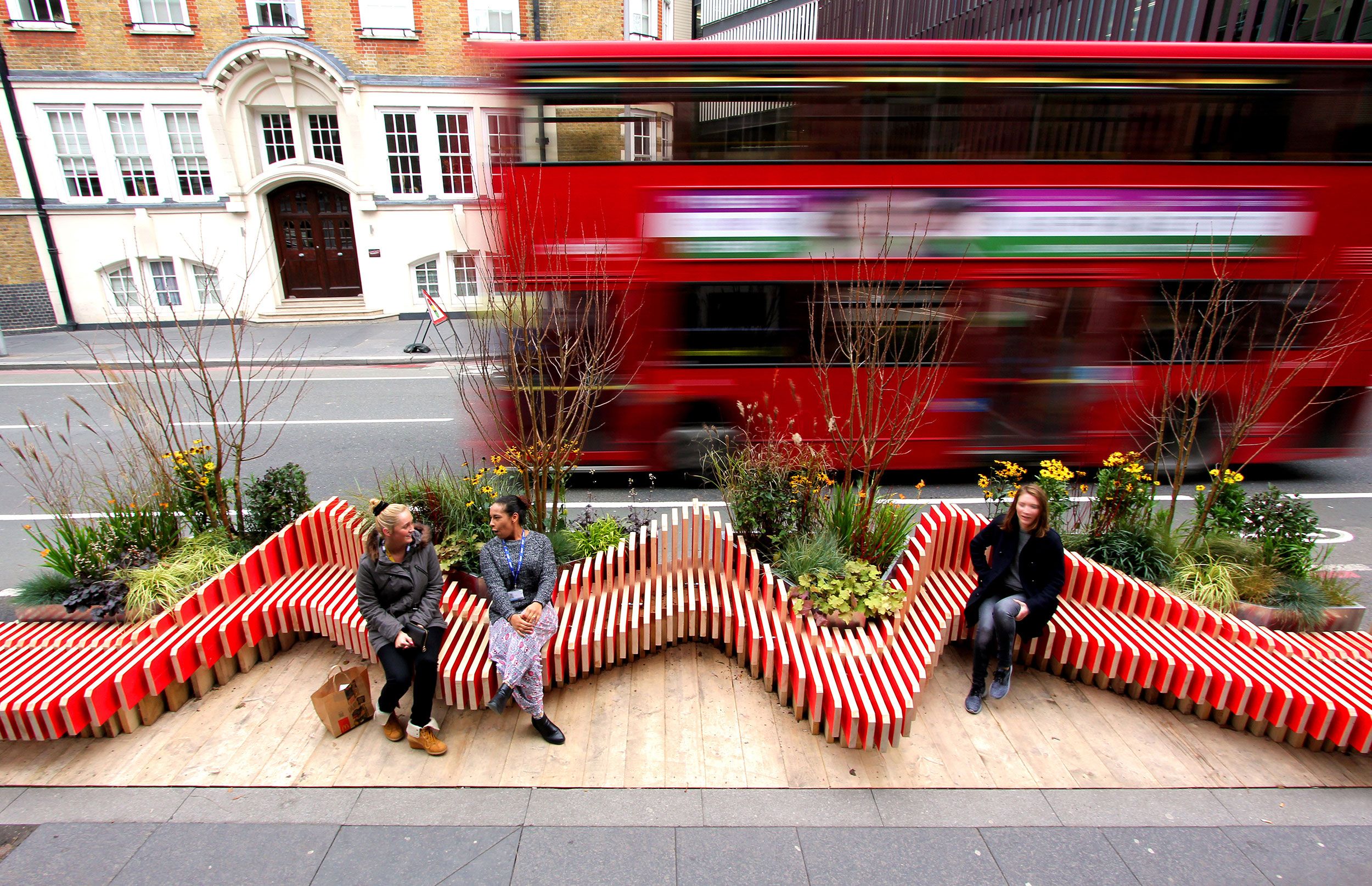A Parklet Guidance document has been published by the Cross River Partnership’s Healthy Streets Everyday Project to provide local authorities, business and communities with a useful resource to assist with parklet design and implementation.
Cross River Partnership (CRP) is a non-profit and impartial partnership organisation that has delivered positive change in collaboration with public, private and community sectors for over 25 years. CRP’s Healthy Streets Everyday (HSE) is a Mayor’s Air Quality Funded project that has been proactively working with a range of borough, BID and landowner partners to make lasting and transformative change to streets throughout London. As part of the Programme, CRP published a new guidance document: “Creating Parklets for Community and Business Resilience - Your Project Guide”. It supports public, private and community sectors through the processes required to design and implement a successful parklet benefiting local business, BIDs and residential communities, enabling flexibility and resilience to change.

Picture Caption: A parklet located on Hammersmith Grove in the Hammersmith BID. The parklet is one of 4 installed in the area and the scheme won first place for the Best Healthy Streets Improvement District Project at the Healthy Streets Awards 2018. (Picture Credit: Meristem Design)
What is a parklet?
At its simplest level, a parklets is a temporary pavement extension that sits in an existing parking bay(s). Parklets were first created in San Francisco, with the first official public parklet being installed in 2010. They have since emerged in the UK and Europe with the first parklet in London appearing in Hackney in 2015. Despite this, a lack of information and data on parklet implementation has meant that uptake in the UK has been fairly slow. However, the recent implications of COVID-19 has resulted in a desire for more space on London’s streets, and interest in parklets has consequently started to surge.
COVID-19 has changed the way the world thinks about space, travel, health and the environment and the desire for more space on London’s streets continues to magnify. London is no exception, with TfL’s Streetspace Programme being implemented at an unprecedented scale to provide safe, spacious streets that encourage active travel and reduce viral transmission. However, the crisis has also emphasised the critical lifeline that open green space plays for cities and their residents; providing free places for play, exercise, connection to nature, as well as acting as facilitators for social interactions, and boosting the local economy. Parklets are a quick, cheap, flexible and temporary solution that provide more space for walking and cycling, whilst also encouraging economic recovery and additional space for rest and leisure
The Benefits of Parklets
A well-designed and co-ordinated parklet not only provides additional green open space, but can also promote active travel, stimulate economic growth and encourage community engagement. In fact, parklets can provide a range of social, economic and environmental benefits:
- Improved physical and mental health
- Improved visual and aesthetic environment
- Reduction in crime & antisocial behaviour
- Air quality benefits
- Temperature reduction and shading
- Additional carbon storage and biodiversity
- Increased footfall and cycling
- Revenue growth
- Increased dwell time
- Reduced staff turnover, improved productivity and job creation
Following installation of parklets in Stockport and Fitzrovia, users reported better wellbeing and improved mental health. Additionally, following a parklet trial in Perth, Western Australia, walking and cycling increased by 35%, and in Hammersmith BID, cafes reported a 30% growth in sales following parklet installations.

Picture Caption: Local workers and residents enjoying food bought from local businesses at the Fitzrovia parklet, Fitzrovia Partnership BID (pre coronavirus).
So what makes a great parklet?
Although CRP’s Parklet Guidance goes into this in more detail, there are several key principles that need to be considered when designing and implementing a parklet. Firstly, stakeholder engagement is critical. Working with local businesses and communities to create a parklet that is tailored to their needs will ensure that the parklet has momentum and could even lead to support in terms of funding and maintenance - something that is becoming increasingly important considering the current funding climate.
Additionally, consideration need to be given to the components and materials - ensuring that materials are weather-resistant, structurally sound and recyclable where possible, is important to guarantee that a parklet is attractive, safe and sturdy. Similarly design elements should be provided to ensure that the parklet is accessible to all people, including the mobility impaired. For example, ensuring that the parklet floor is level with the pavement and providing seating for less able users.
However, designing a parklet can also be fun. Engaging the community and encouraging creativity is a great way to create a unique parklet that reflects local people and businesses. For example, a parklet can be tailored to its local surroundings by working with local artists and designers to provide unique design features. Similarly, there may be an opportunity to engage with a local garden centre or gardening group when picking out planting.
Finally, don’t be afraid to think outside the box – parklet projects can also be really innovative, with some parklets even incorporating water fountains and solar panels into their designs.

Picture Caption: Team London Bridge and WMB Studio’s creative parklet uses innovative design to provide a fun yet accessible parklet that also incorporates in-built air quality monitoring to understand fluctuations in local air quality (Picture Credit: Ed Butler, WMB Studio).
Find out more
To find out more about CRP’s Healthy Streets Everyday Parklet guidance please visit CRP’s publications page where you will be able to search for and access the document.
Additionally, for further information about CRP’s Healthy Streets Everyday Programme please contact Fiona Coull – Healthy Streets Everyday Project Manager: fionacoull@crossriverpartnership.org



